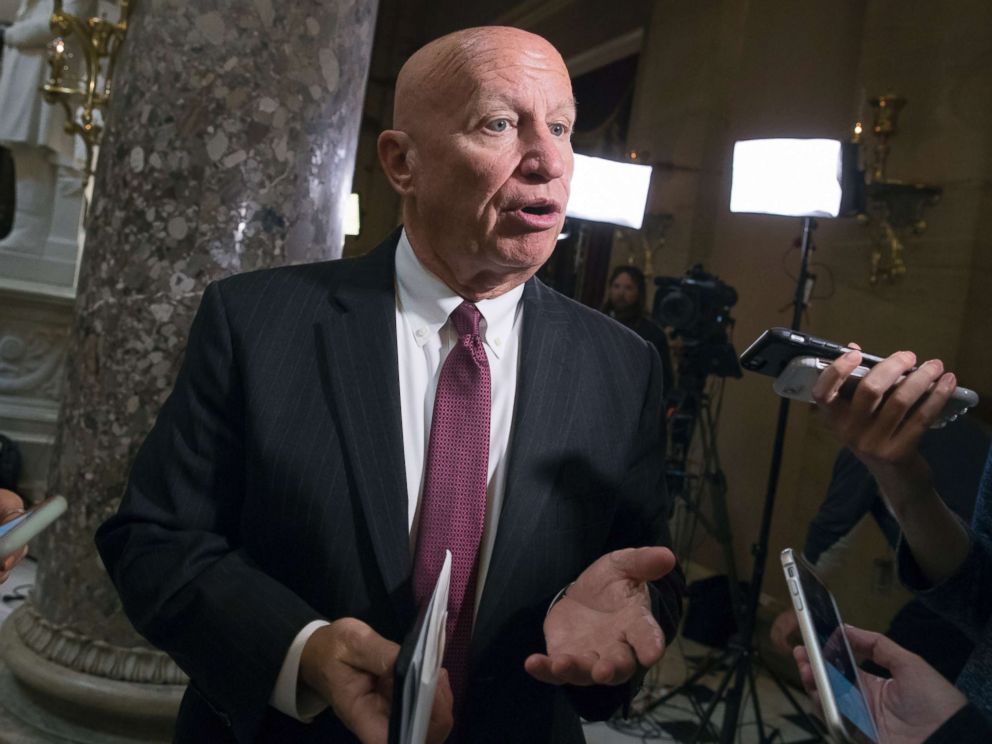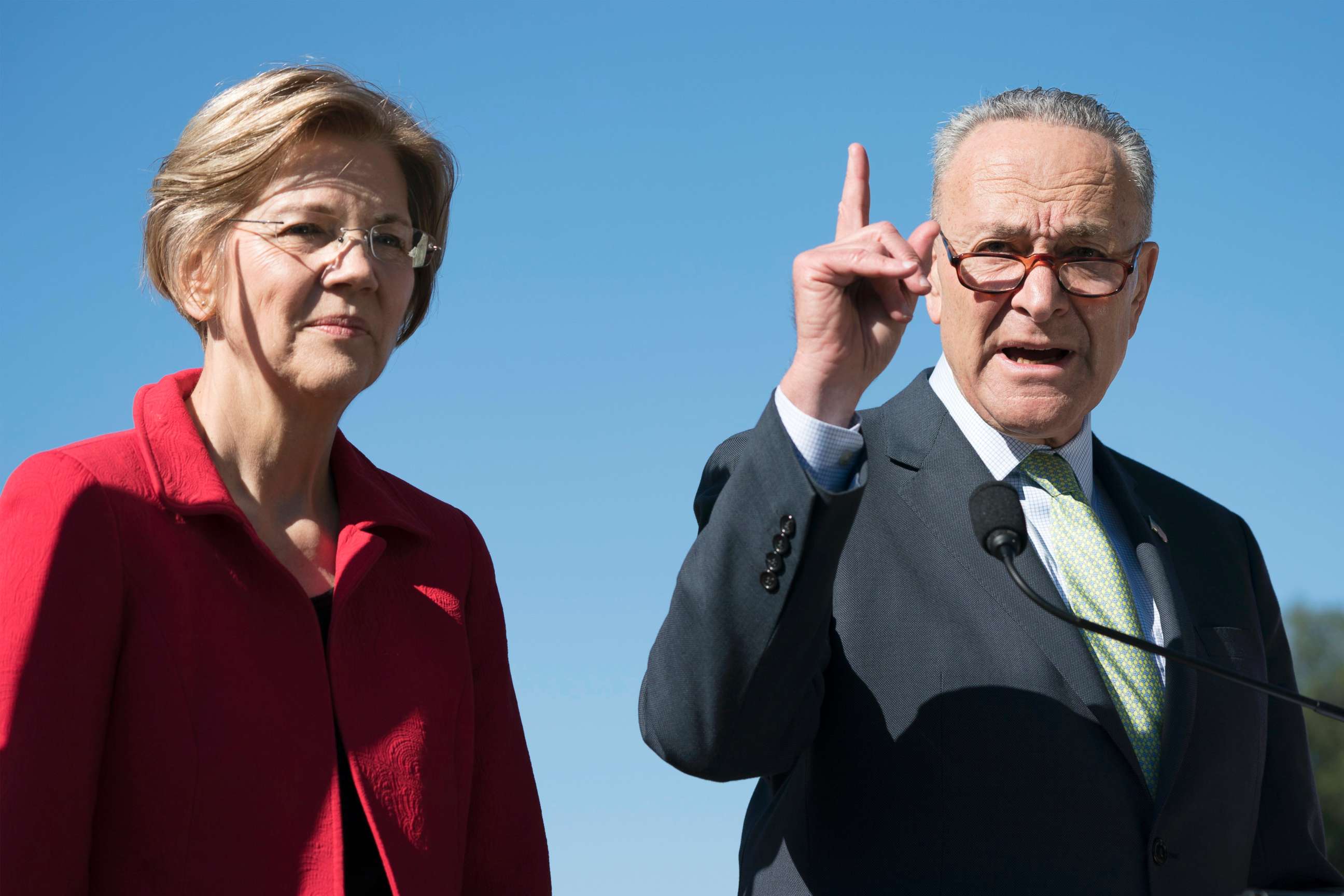Republicans see need for speed to satisfy Trump's tax overhaul demands
“I want to get it by the end of the year," the president has said.
— -- From the day he declared his intention to overhaul the tax code to the signing ceremony in the Oval Office, President Ronald Reagan’s comprehensive tax reform efforts took almost three years, replete with laborious congressional hearings, marathon backroom negotiations and several premature declarations of the bill’s demise.
In a prime-time address to the nation on taxes in May 1985, Reagan said he was calling it “America’s tax plan because it will reduce tax burdens on the working people of this country, close loopholes that benefit a privileged few, simplify a code so complex even Albert Einstein reportedly needed help on his 1040 Form, and lead us into a future of greater growth and opportunity for all.”
With aspirations as lofty as Reagan’s, President Donald Trump wants complete the same process in less than three months, starting with a House bill going from creation to passage in less than three weeks.
“I want to get it by the end of the year but I’d be very disappointed if it took that long,” Trump said in a recent interview.
The House and Senate tax-writing committees insist they will meet that deadline, noting that lawmakers, staffers and White House officials have been meeting together for months. Republicans cleared a major legislative hurdle Thursday when the House narrowly passed a nonbinding budget resolution that allows the Senate to consider the tax bill under a 51-vote threshold rather than a 60-vote one.

House leaders say they want to pass their bill and send it to the Senate by Thanksgiving. Ways and Means Chairman Kevin Brady said yesterday that his committee will introduce its bill on November 1, and begin debating and amending it the following week. According to the Congressional calendar, that leaves only eight working days to package and pass a bill, as the House is scheduled to be out of session for Veterans’ Day and Thanksgiving Week.
“I think that getting this to the President’s desk by the end of the year is achievable. Is it ambitious? Absolutely. President Reagan’s reform took two and a half years. We’re trying to do it in one year. But I think the economy and the public is starved for this for tax reform,” Brady said in a recent radio interview.
And the Senate is on board, at least publicly, with an end-of-the-year deadline in its chamber.
“The Senate Finance Committee continues to work toward the development of comprehensive tax reform legislation that will grow the economy and provide relief to middle-class families. Chairman Hatch intends to lay down a mark for the committee to advance in the coming weeks. Details will be released when finalized,” a spokeswoman for Senate Finance Committee chairman Orrin said in a statement.
There are still some deep policy divides, especially between Congress and the White House, as both chambers craft proposals, for example on whether or not to change the caps on contributions to 401k retirement accounts.
After news reports emerged suggesting Republicans were considering it, Trump tweeted that such changes were off the table.
But lawmakers have not held to that talking point.
Sen. Bob Corker, who announced this week that he was not running for re-election, urged the president not to prematurely take negotiating items off the table and to “leave it to the professionals.” And when asked where he stands on 401ks, House Speaker Paul Ryan punted to Brady.
“I used to run that committee, and I didn’t want leadership doing my job then so I’ll defer to them,” he said.
Besides the time frame, another big difference between Reagan’s tax overhaul and the one Trump is attempting is that the 1986 law was bipartisan.
“Among the bill's active supporters were such prominent liberals as Senator Bill Bradley, D-N.J., and such undeniable conservatives as President Ronald Reagan,” the Urban Institute’s Joseph Minarik wrote in 1987.

In the Senate, 33 of the chamber’s 45 Democrats voted for the final conference report, the finished product after negotiations over the House and Senate bills. The House passed the conference report with bipartisan approval 292-136.
But Republicans have argued that lawmakers on the left signaled early on that they were not interested in working across the aisle.
Back in August, most Senate Democrats signed a letter to Majority Leader Mitch McConnell outlining their priorities, including that no reform efforts should increase the tax burden on the middle class, which McConnell said was proof they didn’t want to work together.
While there are a handful of moderate Democrats who might cross party lines, McConnell will largely have to rely on the 52 Republican votes he has to pass tax reform – making the margin between victory and defeat even thinner.
“I don’t think this is going to be 1986, when you had a bipartisan effort to scrub the code,” he said in August.
But Democrats have warned against that plan, noting that Republicans’ health care efforts failed and that those too were considered on party lines.
“We saw the trouble of going at it alone with health care," Senate Democratic Leader Chuck Schumer said around the same time the letter went out. "If they decide to cut Democrats out of the process and do it by themselves, the same thing is likely to await them."